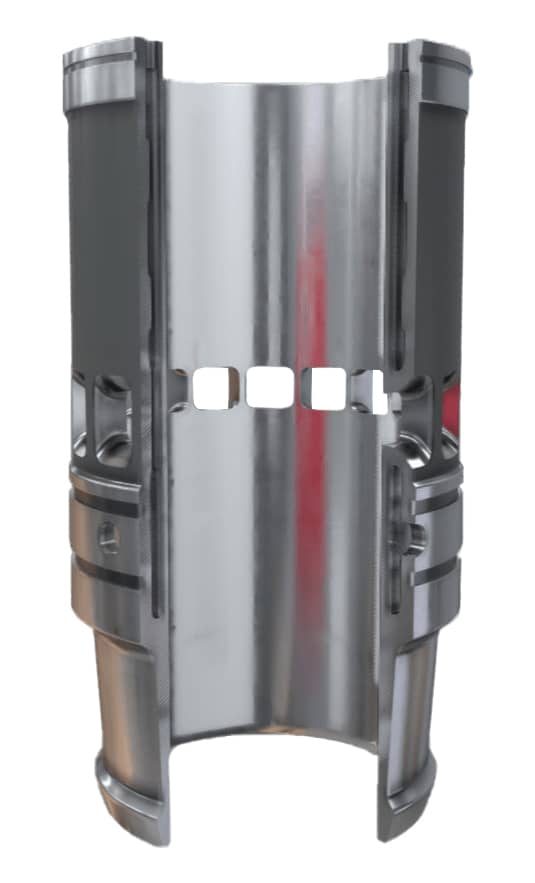Introduction
Internal combustion (IC) engines use one of two types of cylinders. In one type, each cylinder is simply machined or bored into the block casting, making the block and cylinders an integral part. In the second type, a machined steel sleeve is pressed into the block casting to form the cylinder. With either method, the cylinder sleeve or bore provides the engine with the cylindrical structure needed to confine the combustion gasses and to act as a guide for the engine's pistons.
Wet and Dry Engine Sleeves
In engines using sleeves, there are two types of sleeves, wet and dry. A dry sleeve is surrounded by the metal of the block and does not come into direct contact with the engine's coolant (water). A wet sleeve comes into direct contact with the engine's coolant. The image below shows an example of a wet sleeve. The volume enclosed by the sleeve or bore is called the combustion chamber and is the space where the fuel is burned.

Diesel Engine Wet Cylinder Sleeve
In either type of cylinder, sleeved or bored, the diameter of the cylinder is called the bore of the engine and is stated in inches (imperial) or mm (metric). For example, the bore of a 350 cubic inch Chevrolet gasoline engine is 4 inches.
Related Online Engineering Courses
Internal Combustion Engine Basics
Diesel Engine Fundamentals (Part 1)
Diesel Engine Fundamentals (Part 2)
Additional Resources
https://www.tpr.co.jp/tp_e/products/cylinderliners/about.html
https://www.researchgate.net/publication/333245766_Simulation_of_a_Wet_Cylinder_Liner
https://patents.google.com/patent/EP0450067A1/en